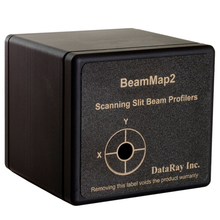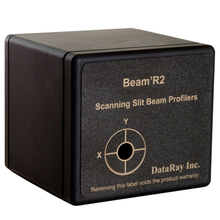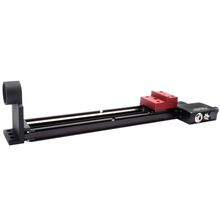Divergence Measurement
Beam divergence is defined in the far-field where the beam divergence is constant, but when measuring beam divergence, it's necessary to determine if the measurements will made in the far-field or near-field. For highly diverging beams, the divergence measurement can be made directly in the far-field, but for lower divergence or collimated beams, the beam waist and far-field may be inaccessible or difficult to define.
Measuring from the Far-field
If measuring from the far-field (greater than four Rayleigh ranges from the beam waist), consider the following solutions:
A BeamMap2 (with appropriate plane spacing) in divergence mode to measure divergence directly in real-time for beam divergences between 1 & 350 mrad (0.02° to 20°). This will work well for CW/quasi-CW beams.
A Beam'R2 or beam profiling camera on a translation stage to measure the beam diameter along several Z-positions to measure divergence directly.
A Beam'R2 or beam profiling camera to measure beam diameter at a known distance Z from the source to measure divergence directly with the assumption of a point source.
Measuring from the Near-field
If measuring from the near-field, consider using a BeamMap2 in M² mode with the beam waist at the zero plane. The first three planes are in the near-field and the last is in the far-field, providing real-time M² and divergence measurements.
Need help choosing between far-field and near-field?
Refer to the Gaussian Beam Divergence Measurement application note and its associated worksheet.

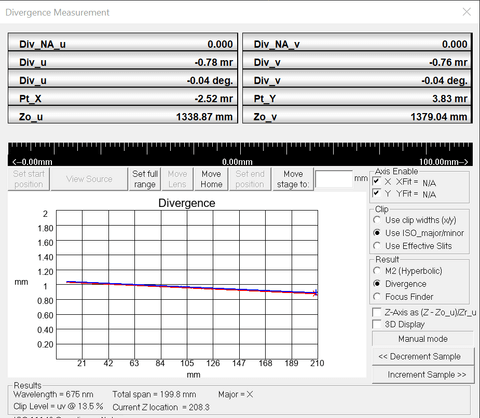
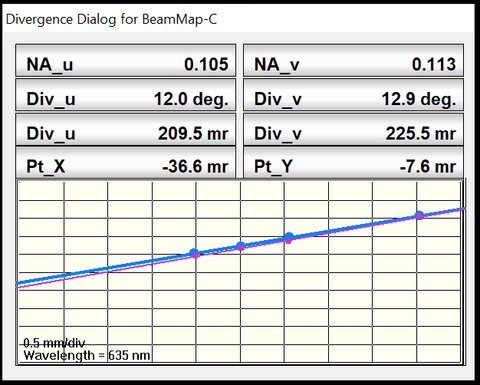
If you’re unsure which product is most suitable for your application or have the need for something custom, please contact us.
Have questions or need help identifying the right solution for your application?


